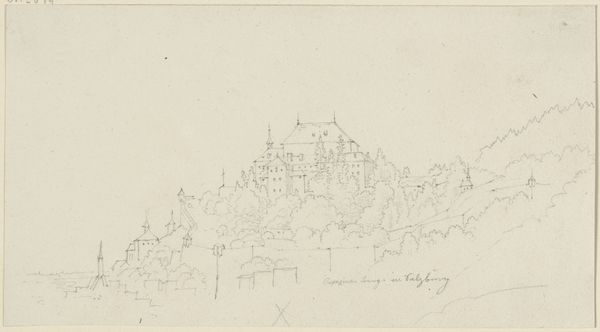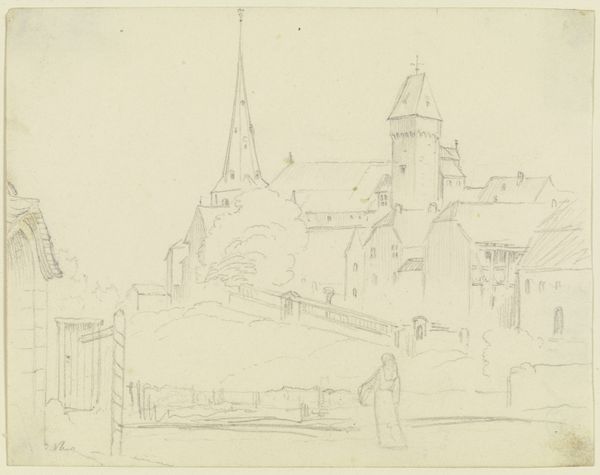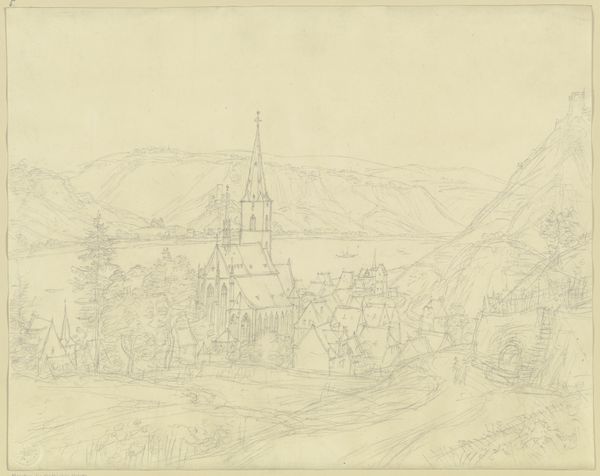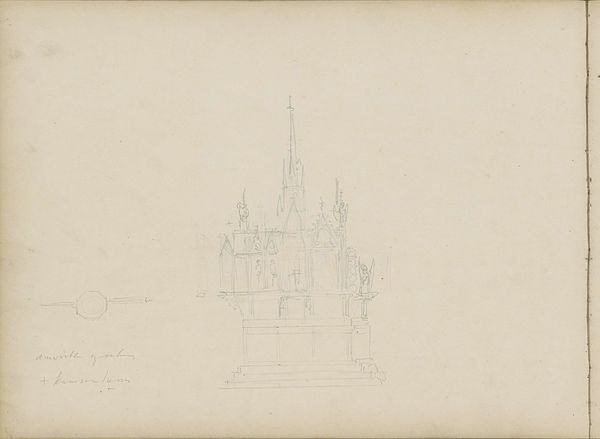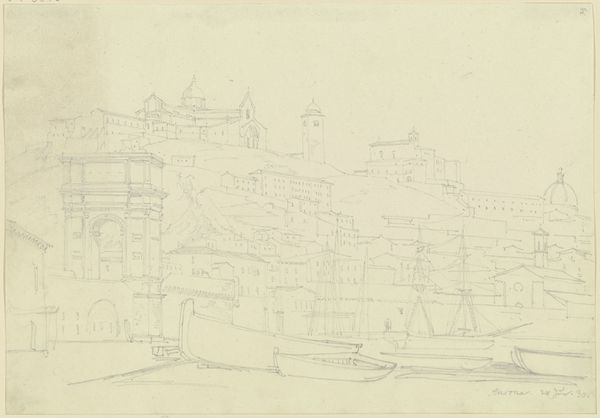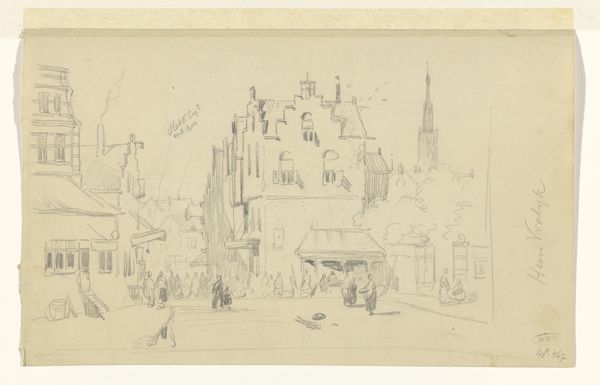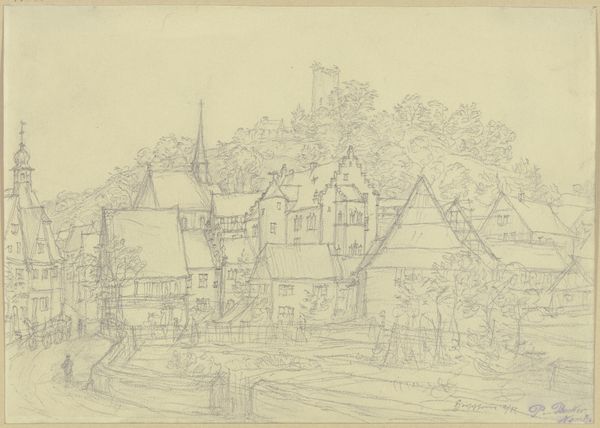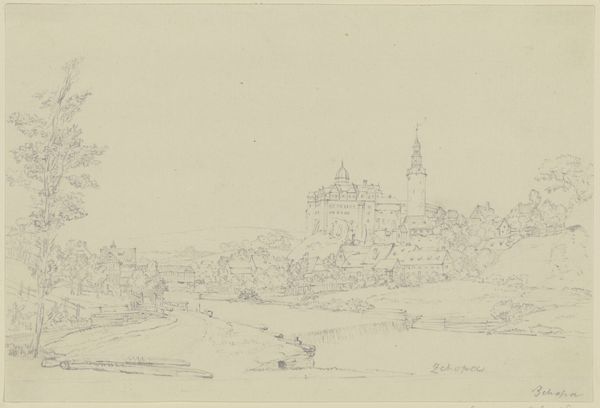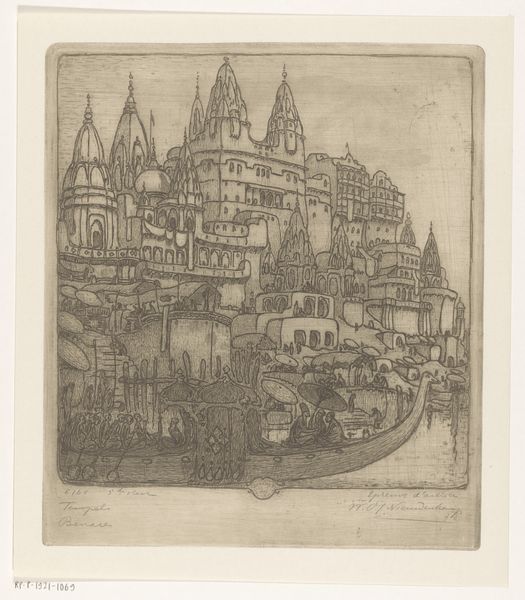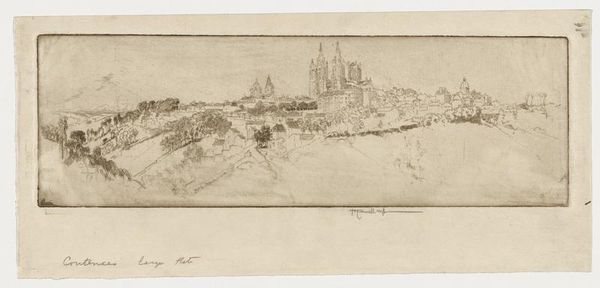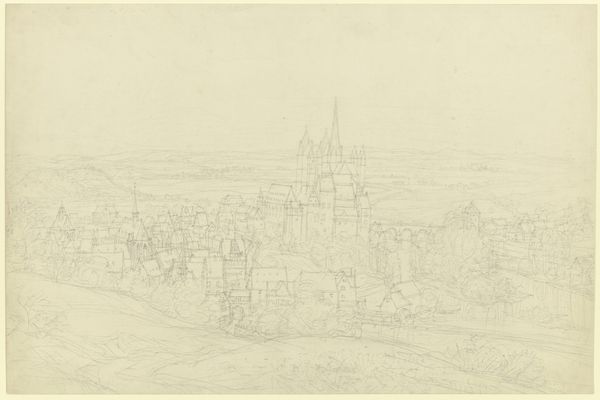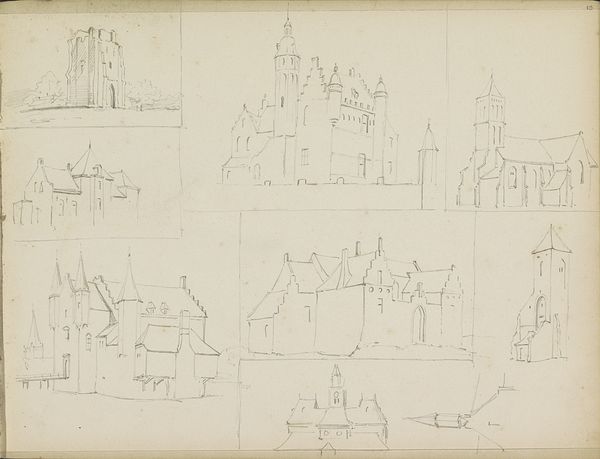
drawing, pencil, architecture
#
drawing
#
16_19th-century
#
landscape
#
pencil
#
architecture
Copyright: Public Domain
Curator: Here we have a pencil drawing entitled "Braunfels Castle" by Peter Becker. It's currently held at the Städel Museum. Editor: What strikes me first is how ethereal it feels, almost as though the castle and its surrounding landscape exist more in the realm of imagination than concrete reality. The composition emphasizes this—see how Becker uses these faint, tentative lines. Curator: Yes, those lines! For me, that almost unfinished quality speaks volumes. It invites us to consider castles not just as stone structures but as powerful symbols within our collective psyche. Consider, Braunfels castle existed as a real space. Editor: A real space meticulously rendered with delicate shading! The way he's built up layers of graphite to suggest form, light, and atmosphere…it’s remarkable! I can feel a distinct spatial depth here. The structural relationships show skill in representing space on a two-dimensional plane. Curator: Think of castles throughout history and in fairy tales. They are often stand-ins for safety, power, and, yes, sometimes isolation. The architectural structures become a symbol for these things. This artwork then prompts viewers to engage in a story associated with German cultural history, even romanticism. Editor: Romanticism for sure! It possesses a distinctly "picturesque" aesthetic. Note how the trees frame the scene and the subtle diagonals in the terrain which create a sense of movement leading to the central structure. The interplay of line and space is all meticulously designed to draw the eye. Curator: Absolutely. Becker taps into something primal – that sense of yearning, that whisper of historical memory. We've built up such emotional attachments to the architectural landscape depicted. I think of the legends these structures evoke. Editor: So well stated. It also speaks to the function of drawing as an exercise – both to work through design challenges and, indeed, emotional ideas. What Becker captured through line is almost more potent because it is reduced to its fundamental structure. Curator: Precisely, stripped back to a potent essence. What at first appeared to be a landscape drawing soon expands, once you delve into understanding, to embody this cultural and human significance, doesn't it? Editor: Indeed, it has an understated yet incredibly captivating energy. What began as an observation about the visual architecture concludes with an appreciation of emotional architecture, too.
Comments
No comments
Be the first to comment and join the conversation on the ultimate creative platform.
